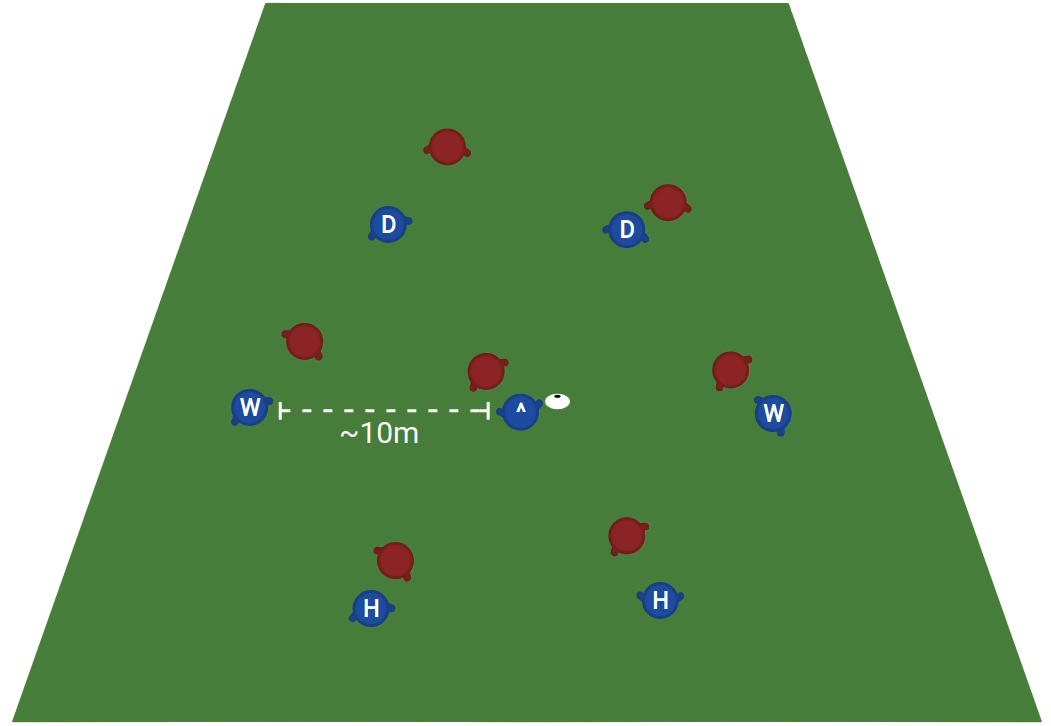Intro to Hex
Hex is a relatively new and innovative offensive strategy that prioritizes constant disc movement by using short passes and quick give-go moves to keep the defense at a disadvantage. To facilitate this movement, players are distributed evenly across the field to create multiple triangles between adjacent teammates, thereby maximizing the number of passing options or "connections". This structure deviates from traditional stack-offenses where cutters are often bunched together with only one or two active cutters at any given moment who are viable passing options. Another way in which Hex differentiates itself from stack-offenses is that hex doesn't separate players into handlers and cutters. Positions in hex are very fluid and every player is expected to switch positions often and be able to fill in whichever role the current situation demands of them. Hex is fast-paced and flexible, capable of being effective against any type of defense, but it demands a high-level of skill and awareness from all players involved to be executed well.
Structure
The default structureshape is shown below:
The positions in hex are divided in to the four following roles: The hat (^) who is in the middle of the formation, two wings (W) on either side of the hat, 2 handlers (H) behind the hat & wings, and 2 deeps (D) who are in front of the hat & wings. Keep in mind that these positions are not permanent, so players may start in a particular position and then rotate through being any of the other positions over the course of a point and a position may disappear for for a bit during the flow of a possession but should be eventually be filled by another player. Players should be at a comfortable throwing distance from each other where the disc doesn't need to take a long time to reach an adjacent player but is far enough to make progress. This distance typically comes out to be around 10 meters but should be adjusted based on conditions such as wind and the team's overall throwing ability.
Below is a demonstration of how players in hex should rotate to maintain the shape during flow:
Notice how often players will switch positions as the shape rotates with the disc. Having a perfect hexagon is less important that making sure players are evenly spaced out in front and behind the disc and the players that are making connection with the thrower has room to cut.

